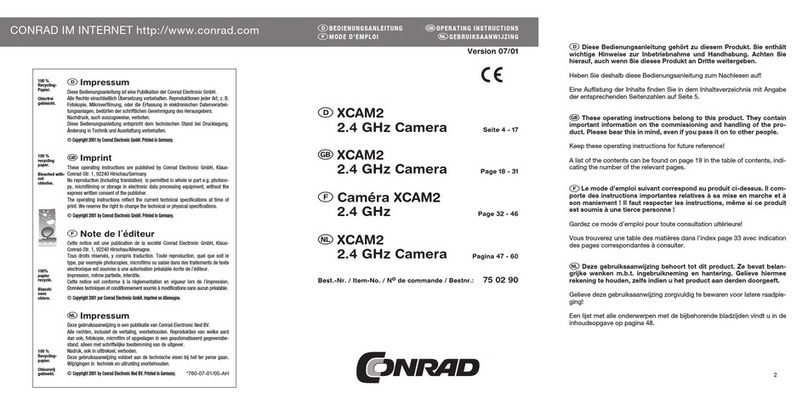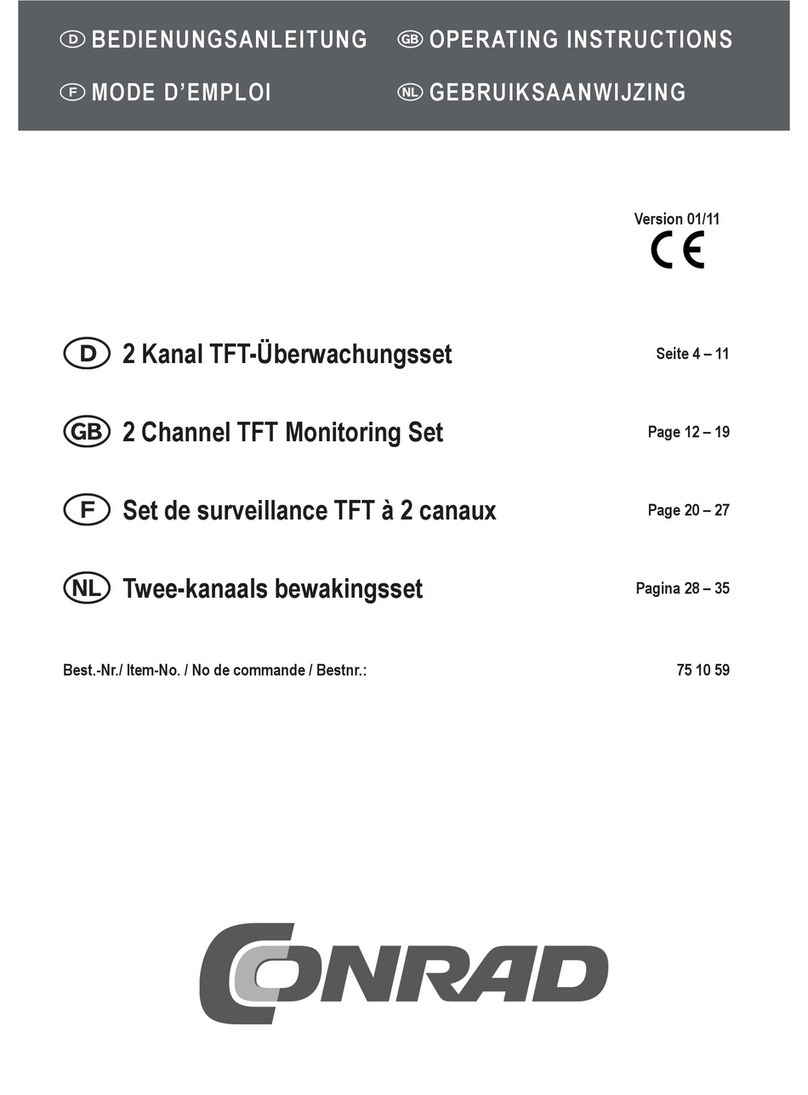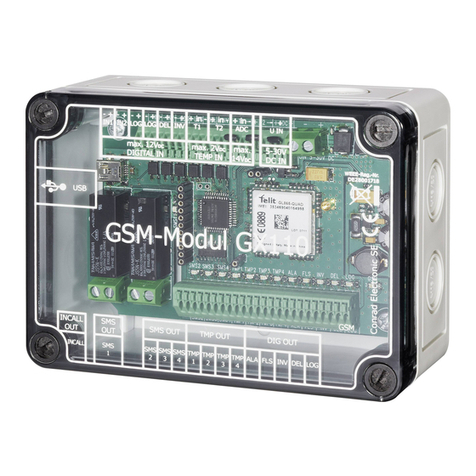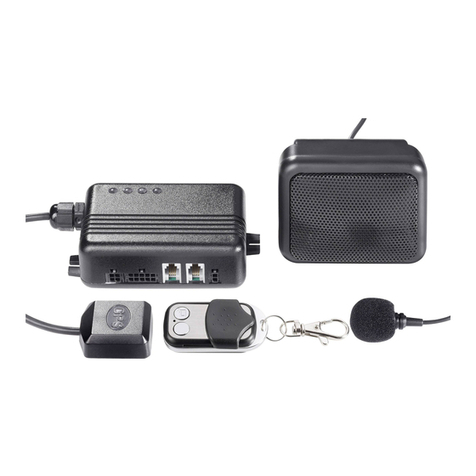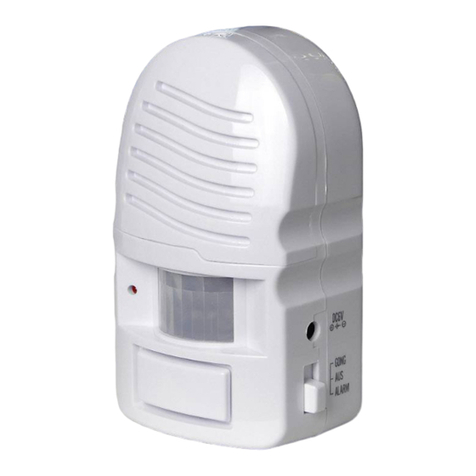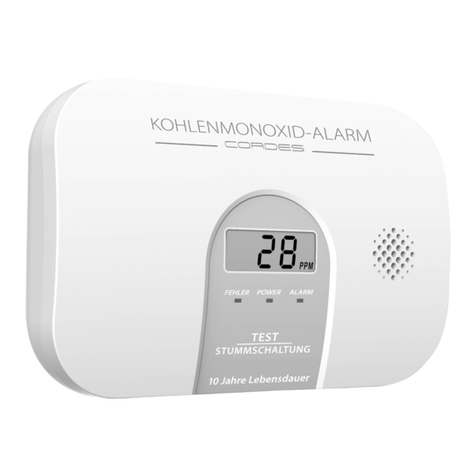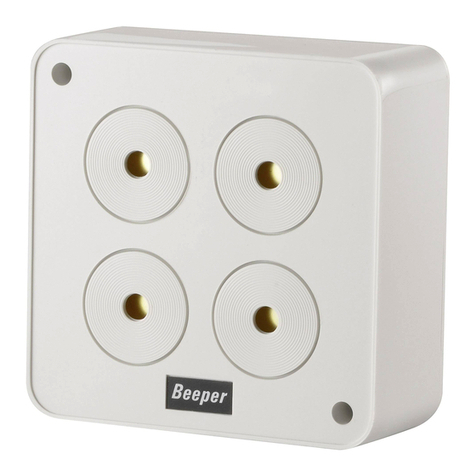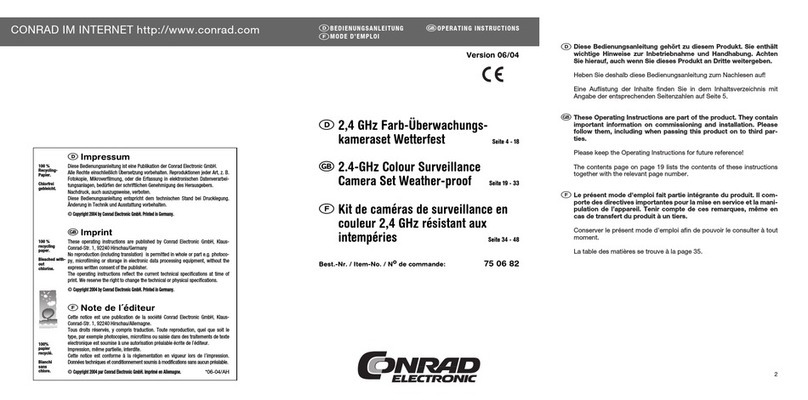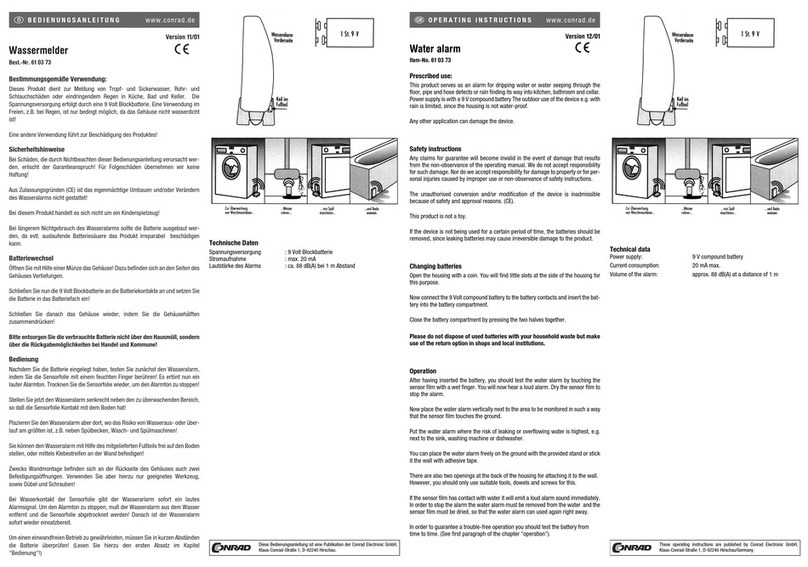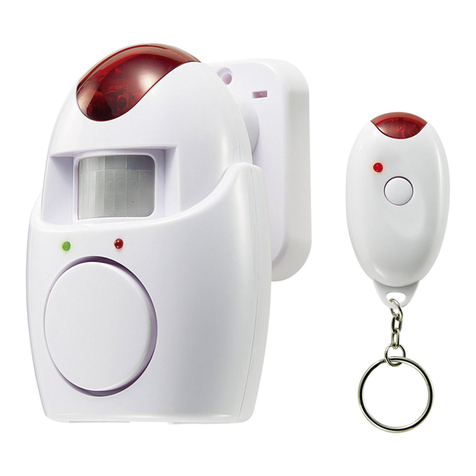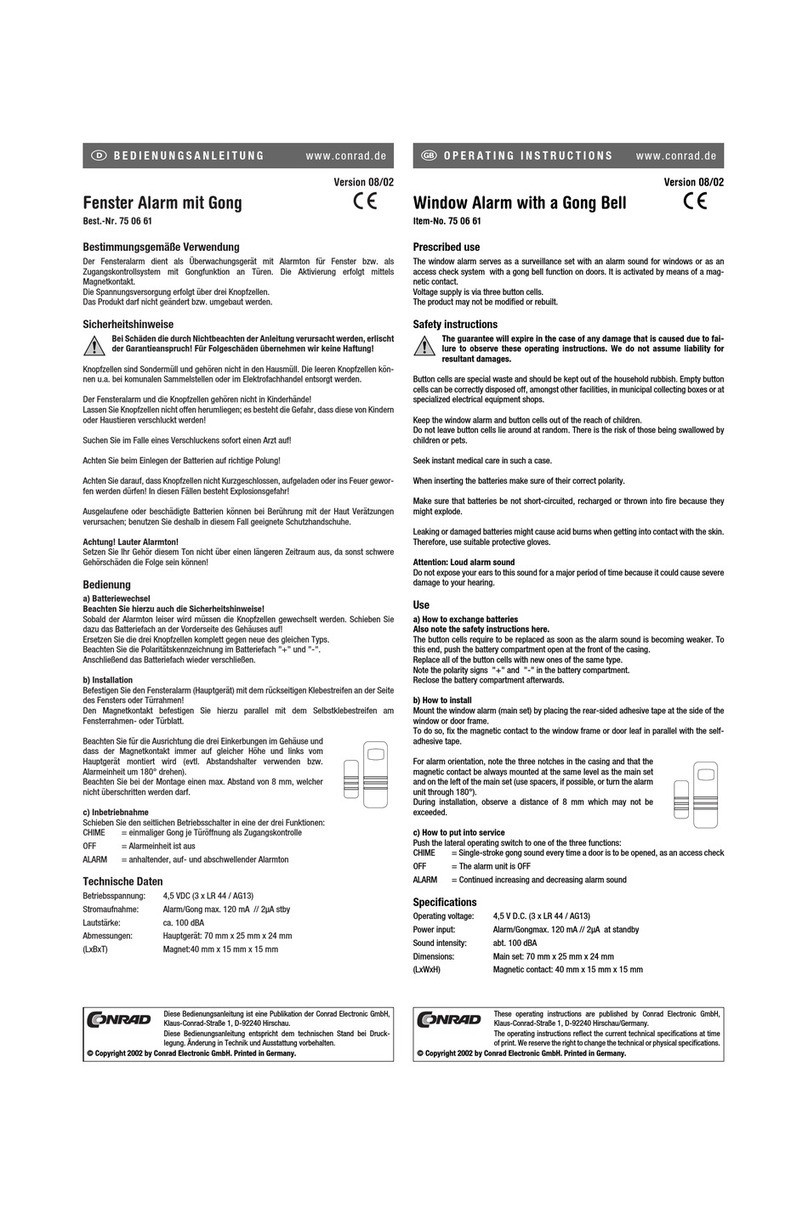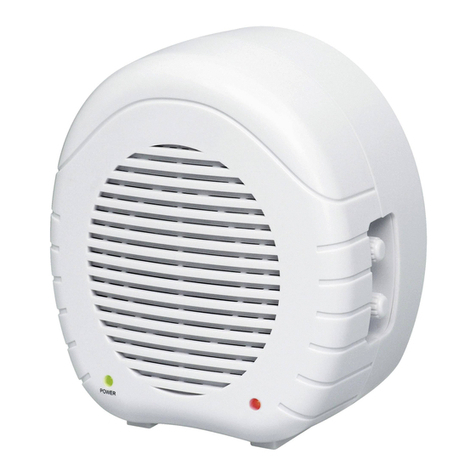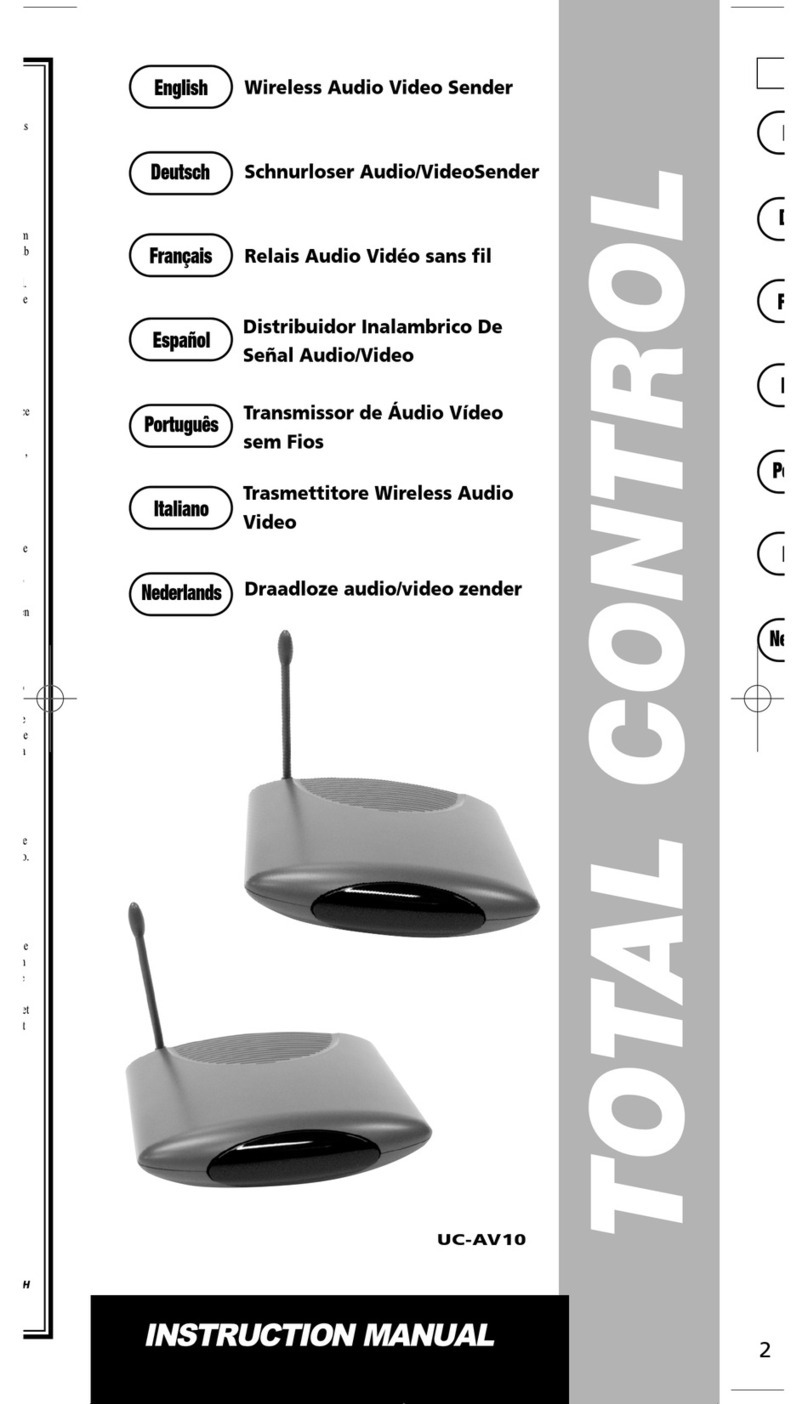Version 06/02
Tür-/Fensteralarm °
Best.-Nr. 75 10 52
Bestimmungsgemäße Verwendung
Bei diesem Tür-/Fensteralarm handelt es sich um ein Sicherheitsprodukt welches
Einbrecher abschreckt. Die Alarmaktivierung erfolgt über Magnetkontakt.
Die Spannungsversorgung erfolgt durch drei Knopfzellen á 1,5 Volt DC.
Der Kontakt mit Feuchtigkeit ist unbedingt zu vermeiden! Eine andere Verwendung
als zuvor beschrieben führt zur Beschädigung dieses Produktes. Das gesamte
Produkt darf nicht geändert, bzw. umgebaut werden!
Sicherheitshinweise
Bei Schäden, die durch Nichtbeachten dieser Bedienungsanleitung
verursacht werden, erlischt der Garantieanspruch! Für Folgeschäden
übernehmen wir keine Haftung!
Aus Sicherheits- und Zulassungsgründen (CE) ist das eigenmächtige Umbauen
und/oder Verändern des Tür-/Fensteralarms nicht gestattet!
Der Tür-/Fensteralarm und die Knopfzellen gehören nicht in Kinderhände!
Knopfzellen sind Sondermüll und gehören nicht in den Hausmüll! Die leeren
Knopfzellen können u.a. fachgerecht im Elektrofachhandel in den dafür vorgesehe-
nen Sammelbehältern entsorgt werden!
Achten Sie beim Einlegen der Knopfzellen auf die richtige Polung!
Lassen Sie Knopfzellen nicht offen herumliegen; es besteht Gefahr, daß diese von
Kindern oder Haustieren verschluckt werden! Suchen Sie im Falle eines
Verschluckens sofort einen Arzt auf!
Ausgelaufene oder beschädigte Knopfzellen können bei Berührung mit der Haut
Verätzungen verursachen; benutzen Sie deshalb in diesem Fall unbedingt geeignete
Schutzhandschuhe!
Achten Sie darauf, daß Knopfzellen nicht kurzgeschlossen, ins Feuer geworfen und
aufgeladen werden! In diesen Fällen besteht Explosionsgefahr!
Wenn der Tür-/Fensteralarm längere Zeit nicht verwendet wird, müssen die
Knopfzellen aus dem Batteriefach entfernt werden, da diese auslaufen können!
Achtung! Lauter Alarmton!
Setzen Sie Ihr Gehör diesem Ton nicht über einen längeren Zeitraum aus, da sonst
schwere Gehörschäden die Folge sein können!
Bedienung
1. Batteriewechsel
Beachten Sie hierzu auch die Sicherheitshinweise!
Sobald der Alarmton leiser wird, müssen die Knopfzellen gewechselt werden.
Schieben Sie dazu das Batteriefach an der Vorderseite des Gehäuses, wie in der
nachfolgenden Abbildung gezeigt, auf!
Ersetzen Sie die Knopfzellen immer komplett und nur durch neue gleichen Typs, z.B.
3 x LR 44! Beachten Sie hierzu die Polarität "+" und "-" (Kennzeichnung im
Batteriefach)! Anschließend das Batteriefach wieder verschließen!
2. Installation
Befestigen Sie den Tür-/Fensteralarm (Hauptgerät) mit dem Selbstklebestreifen an
der Seite des Fensters oder Türrahmen!
Den Magnetkontakt befestigen Sie hierzu parallel mit dem Selbstklebestreifen am
Fensterrahmen bzw. Türblatt! (Siehe Abbildung!) Bei geschlossener Tür bzw.
Fenster darf der Abstand zwischen den beiden Teilen nicht größer als 8 mm sein!
Schieben Sie den Schalter auf "ON" (Ein)! Beim Öffnen des Fensters oder der Tür
ertönt nun der Alarmton. In der Position "OFF" (Aus) ist der Tür-/ Fensteralarm außer
Funktion.
BEDIENUNGSANLEITUNG www.conrad.de
Montagebeispiel:
Technische Daten
Betriebsspannung : 4,5 Volt DC
3 x Knopfzelle LR44
Stromaufnahme : 65 mA bei Alarm
3µA (Standby)
Version 06/02
Door/Window Alarm °
Item-No. 75 10 52
Proper Use
This door/window alarm is a safety product for deterring burglars. Alarm activation
is accomplished via magnetic contact.
Voltage supply is achieved via three button cells with 1.5 volts DC each.
Contact with humidity must be avoided! A use other than the above described caus-
es damages to this product. The entire must not be modified or rebuilt!
Safety Notes
Damages resulting from the non-observance of this operating manu-
al invalidate the guarantee claim! We do not assume liability for con-
sequential damages!
For reasons of safety and approval (CE) unauthorised rebuilding and/or modification
of the door/window alarm is not permitted!
The door/window alarm and the button cells must be kept away from children!
Button cells are to be considered as special waste and such must not be disposed
of in the household waste! Empty button cells for example can be disposed of appro-
priately with electric dealers in collection boxes provided for this purpose!
When inserting button cells observe the correct polarity!
Do not leave button cells lie around unattended! They might be swallowed by chil-
dren or pets! In such a case seek immediate medical care!
Leaking or damaged button cells may cause cauterisation when in contact with the
skin; therefore use appropriate protection gloves!
Make sure not to short-circuit button cells, throw them into fire or charge them!
These cases involve explosion hazard!
If you have not used the door/window alarm for a prolonged period of time, remove
the button cells from the battery compartment because the may leak!
Caution! Loud alarm!
Do not expose your hearing to this alarm sound for a prolonged period of time as
otherwise your hearing may suffer severe injury!
Operation
1. Battery replacement
Observe also the safety instructions in this context!
As soon as the alarm diminishes, you must replace the button cells. To this end,
open the battery compartment on the front side as described in below illustration!
Always replace the entire set of button cells and use only fresh batteries of the same
type for replacement e.g., 3 x LR 44! Observe the correct polarity "+" and "-"
(imprinted in the battery compartment)! Afterwards close the battery compartment!
2. Installation
Attach the door/window alarm (main device) to the side of the window or door frame
by means of the adhesive tapes!
The magnetic contact must be attached to the window frame or door leaf in paral-
lel position using the adhesive tape! (See illustration!) The distance between these
two parts must not exceed 8 mm when the door or window is closed!
Set the switch to "ON"! An alarm will now sound when the door or window are
opened. In the position "OFF”, the door/window alarm is out of service.
OPERATING INSTRUCTIONS www.conrad.de
Mounting example:
Technical Data
Operating voltage : 4.5 volts DC
3 x button cells LR44
Power consumption : 65 mA during alarm
3µA (standby)
These operating instructions are published by Conrad Electronic GmbH,
Klaus-Conrad-Straße 1, D-92240 Hirschau/Germany.
The operating instructions reflect the current technical specifications at time
of print. We reserve the right to change the technical or physical specifications.
© Copyright 2002 by Conrad Electronic GmbH. Printed in Germany.
Diese Bedienungsanleitung ist eine Publikation der Conrad Electronic GmbH,
Klaus-Conrad-Straße 1, D-92240 Hirschau.
Diese Bedienungsanleitung entspricht dem technischen Stand bei Druck-
legung. Änderung in Technik und Ausstattung vorbehalten.
© Copyright 2002 by Conrad Electronic GmbH. Printed in Germany.
Hauptgerät
Ein-/Aus-
Schalter
Fenster-/
Tür-Alarm
Batteriefach
Magnetkontakt
Main device
On/Off
switch
Window-/
Door-Alert
Battery compartment
Magnetic contact
